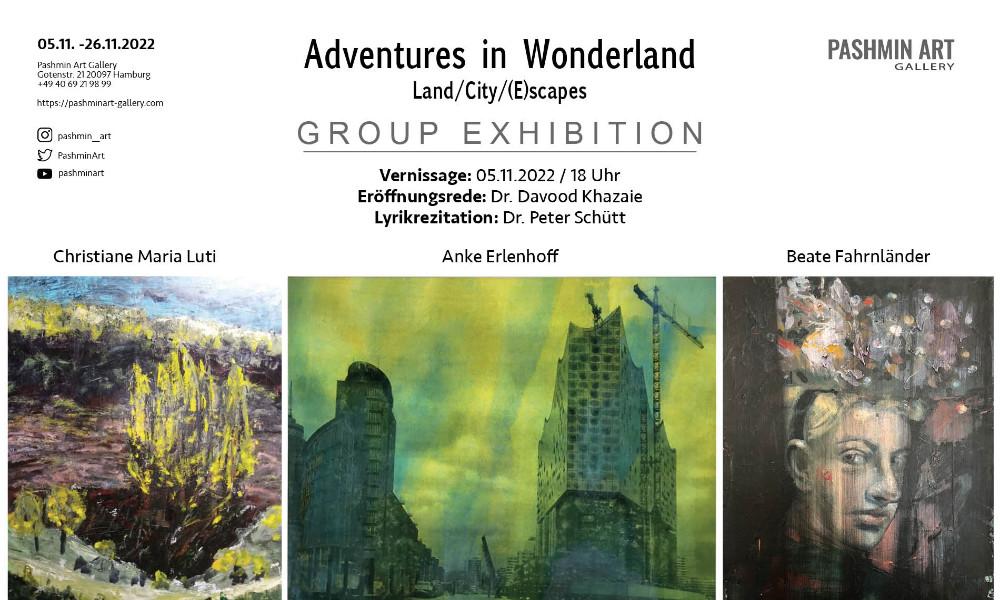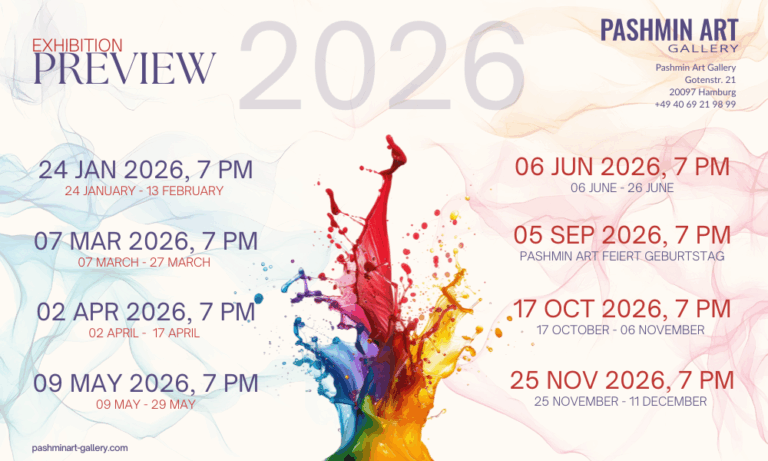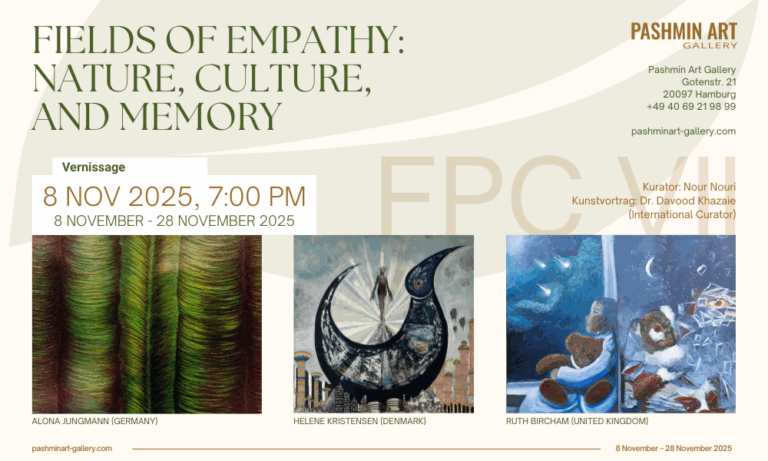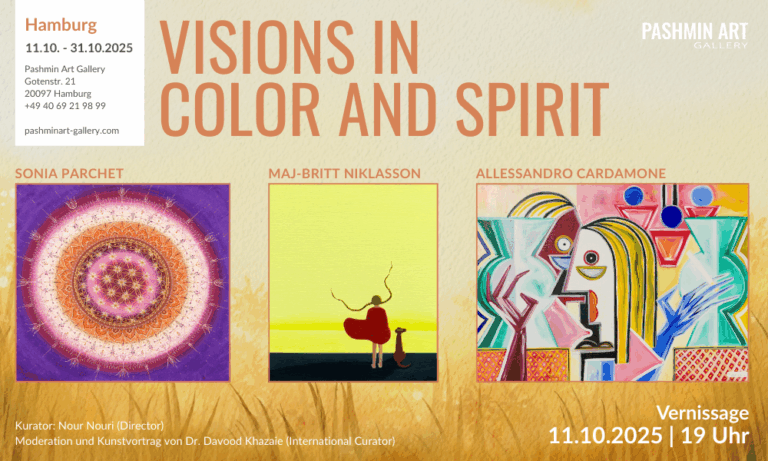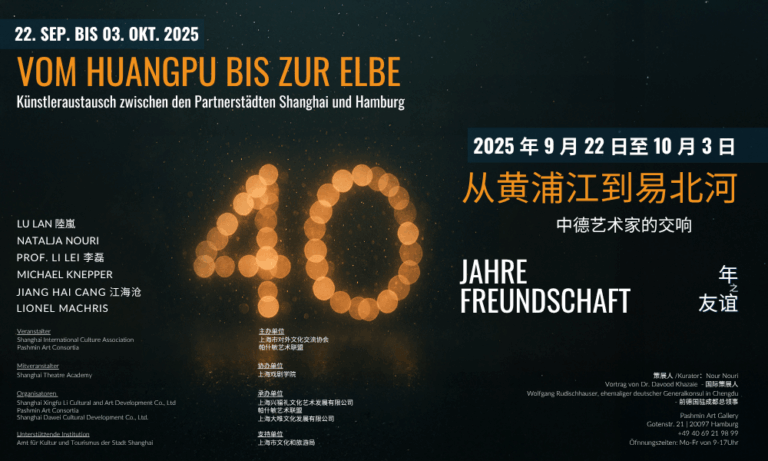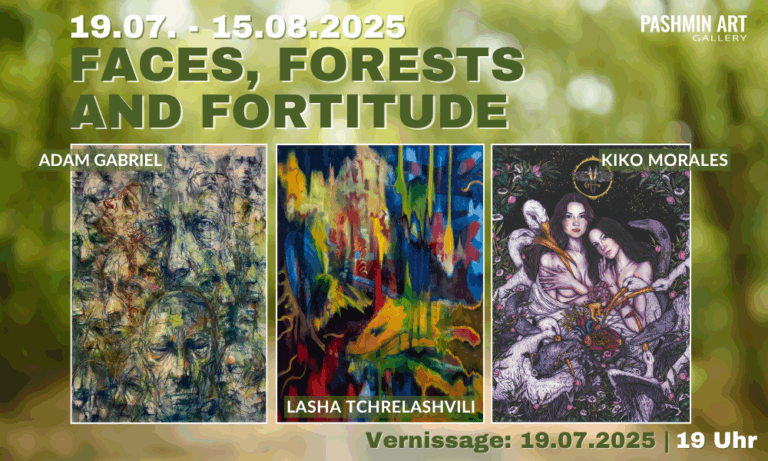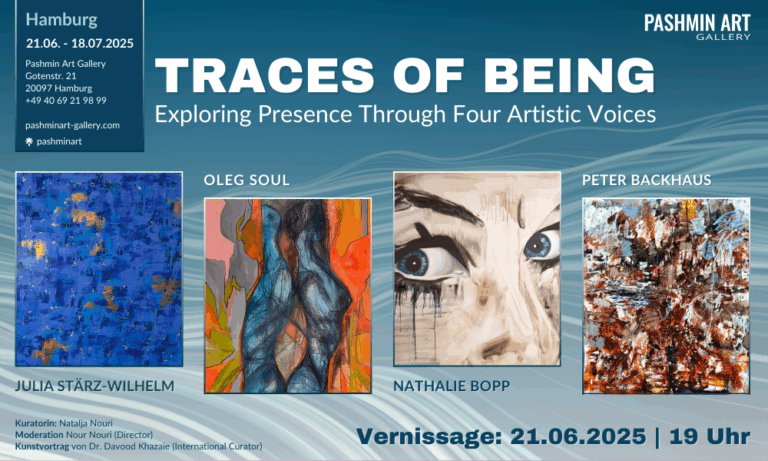The “Adventures in Wonderland” group exhibition includes Christiane Maria Luti, Anke Erlenhoff, and Beate Fahrnländer. The exhibition features landscapes, socio-political art, cityscapes and architecture, abstract art, and portraits. The viewers will get familiar with different art techniques and themes and wander in the wonderland through the looking glass of art.
Vernissage: 05.11.2022 – 6 PM
Exhibition Period: 05.11. – 26.11.2022
Opening Speech: Dr. Davood Khazaie
Lyric recitation: Dr. Peter Schütt
Group exhibition at Pashmin Art Gallery Hamburg with:
Christiane Maria Luti – Anke Erlenhoff – Beate Fahrnländer
Christiane Maria Luti
Christiane Maria Luti is a physician – artist. Early in her career, she turned down an art scholarship and chose medicine. The need to understand people, to get close to them, to get to know them in their existential moments – and, last but not least, to learn as much as possible about their physical construction plan, prevailed. However, when she was given the opportunity to take a break, she seized the opportunity and studied painting at the Lucerne University of Applied Sciences and Arts. In Christiane Maria Luti’s works, apart from her socio-political works showing human beings, landscapes are prevalent. She can be called a philosopher of deep ecology. Deep ecology is a contemporary ecological philosophy which is characterized by the defense of the intrinsic value of living beings and of nature, that is to say a value independent of their usefulness for Human being. It places more value on species and different ecosystems than do classical ecological movements, leading to the development of an environmental ethic. While classical ecology, although developing new alternatives, always posits the satisfaction of human needs as the finality (anthropocentrism) and attributes to the rest of life the status of “resource”, deep ecology reinscribes human finalities in a perspective broader, that of the living (biocentrism) in order to take into account the needs of the entire biosphere, in particular of the species with which the human line has co-evolved for thousands of years. Having traces of impressionism in her art, Luti invites us to befriend nature and people.
Anke Erlenhoff
Anke Erlenhoff has lived in Cologne as a freelance artist since 1988. She studied art, geography and English, theology, architecture and painting during the years in Cologne, Aachen and Düsseldorf academies. In 1995 she was the Lecturer at the Düsseldorf University of Applied Sciences, Department of Design and in 1996-1997, she held the Substitute professorship at the Düsseldorf University of Applied Sciences, Department of Design. Cityscapes include the configuration of built-in forms and the intermediate space. In the visual arts, a cityscape is an artistic representation, in areas such as painting, graphics, printing or photography, of the physical aspects of a city or agglomeration. The main subject of urban landscape painting is the image of the city with its individual houses, streets, squares, panoramic views. The first images of city buildings appeared in the paintings of medieval artists. Anke’s academic studies are reflected in her art. Apart from her semi-abstract artworks, she explores the question of spacial density and diversity and also addresses the physical and social challenges involved in the related space. Using mainly a layer of green color on her architectural artworks, Anke reminds us of the importance of nature alongside modernity and brings together the privileges of art and architecture. “Architecture is an art…. It uses technique to generate an emotion, and it does so with its own specific language, made up of space, proportions, light and materials – for an architect, matter is like sound for a musician or words for a poet.” (Renzo Piano)
Beate Fahrnländer
Beate Fahrnländer made her first experiences with painting and graphic at the HGB Leipzing as a teenager. After leaving the GDR in 1988, she lived and worked in Berlin. She studied graphic design with a focus on illustration in Berlin (Udk Berlin) and Paris (Atelier Penninghan). Using colors with a melancholic touch, Fahrnländer has special focus on where her characters go, stay, or look. Portrait images and statues were ubiquitous in the ancient world, including in Greece and Rome, but primarily in two contexts: they were used for commemorations, including of dead heroes or ancestors, and they gave a face to absent power, whether human rulers or gods. The Roman writer Pliny claimed that all art-making started with a portrait, when a young woman in ancient Greece, in love with a man who had been called off to war, traced the shadow cast by his face to have a record of him when he was gone. The artist portrays her subjects not as gods or goddesses, nor as heroes or heroines, but as normal people. The way Fahrnländer brings the the viewer into the space of the canvas in astounding, with the gazes of the people not always to the eyes of the beholder. Fahrnländer displays people as they are, suitably disregarding Giovan Paolo Lomazzo’s advice: “In women, the first rule to observe, with absolute diligence, is to paint beauty, using art, as much as possible, to take away the errors of nature.”

